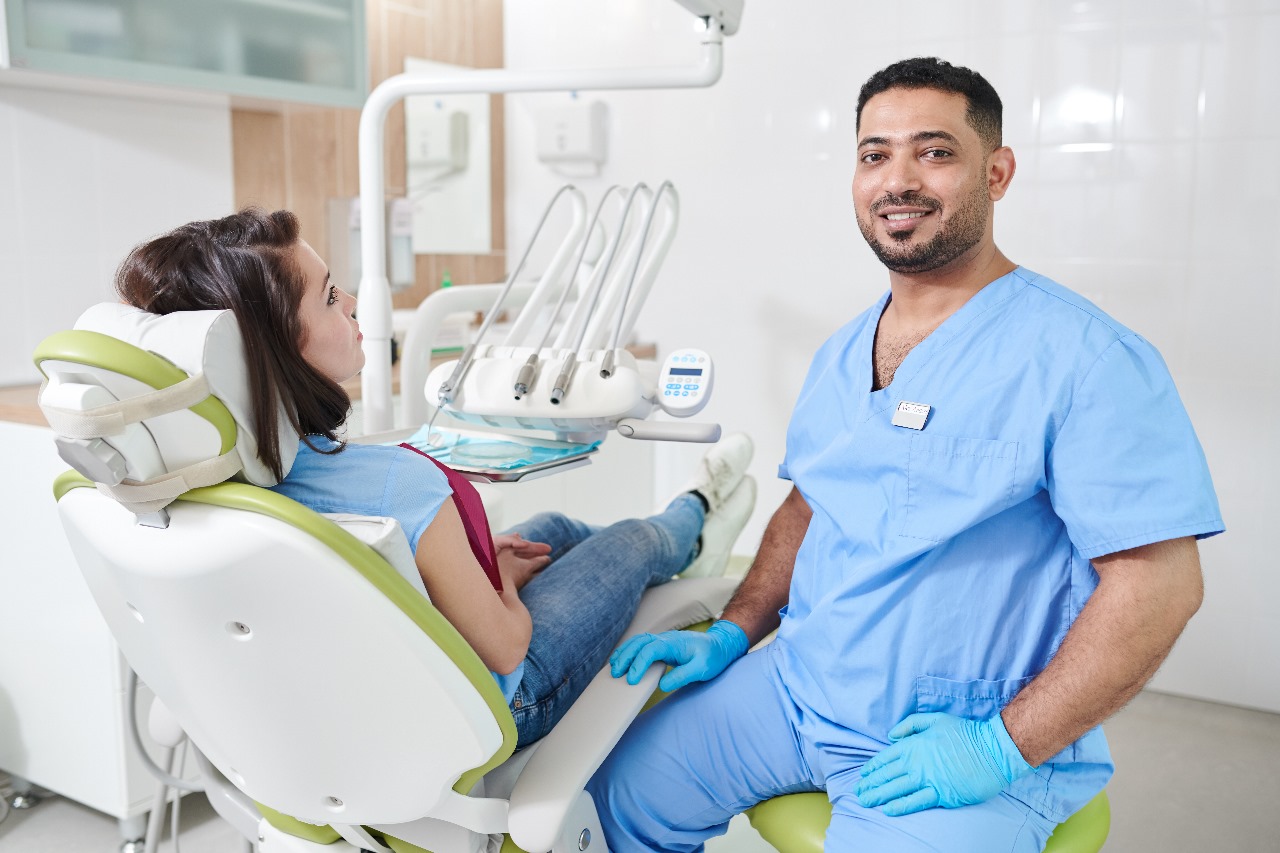When faced with the prospect of tooth extraction, many people worry about the pain involved. Understanding the procedure, types of extractions, pain management techniques, and post-extraction care can help alleviate these concerns. This article will address the question, “Does tooth extraction hurt?” by providing a detailed overview, incorporating essential information and references to relevant research.
What Are the Types of Tooth Extraction?
Tooth extractions can be categorised into two main types: simple extraction and surgical extraction.
- Simple Extraction: This procedure is relatively straightforward and involves the removal of a tooth that is visible in the mouth. Local anaesthesia is typically used to numb the area, making the process less painful. Simple extractions are commonly performed on teeth that are not impacted.
- Surgical Extraction: This procedure is more complex and may involve cutting into the gum tissue or bone to remove a tooth. Surgical extractions are often necessary for impacted teeth or teeth that have broken off at the gum line. This type of extraction may require local anaesthesia, sedation, or even general anaesthesia to manage pain and discomfort effectively.
Table 1: Comparison of Simple and Surgical Extraction
| Feature | Simple Extraction | Surgical Extraction |
| Procedure Complexity | Relatively straightforward | More complex, involves cutting |
| Anaesthesia | Local anaesthesia | Local, sedation, or general anaesthesia |
| Pain During Procedure | Minimal to moderate | Moderate, managed with anaesthesia |
| Recovery Time | Shorter (few days) | Longer (up to a week or more) |
| Common Uses | Non-impacted teeth | Impacted teeth, broken teeth |
| Complications | Fewer complications | Higher risk of complications |
How Is Pain Managed During Tooth Extraction?
Pain management is a critical aspect of the tooth extraction process. Dentists use various techniques to ensure the procedure is as comfortable as possible.
- Local Anaesthesia: For both simple and surgical extractions, local anaesthesia is administered to numb the extraction site. This significantly reduces pain during the procedure.
- Sedation: In cases where patients experience high anxiety or when a more complex extraction is required, sedation may be used. This can range from mild sedation (such as nitrous oxide) to deeper sedation or even general anaesthesia.
- Pain Medications: Post-extraction, pain management is typically handled with over-the-counter painkillers like ibuprofen or acetaminophen. In some cases, stronger prescription medications may be provided.
Table 2: Pain Management Options Post-Extraction
| Pain Management Method | Description | Effectiveness |
| Over-the-counter Painkillers | Medications like ibuprofen or acetaminophen | Moderate |
| Prescription Pain Medications | Stronger medications prescribed by a dentist | High |
| Ice Packs | Applying cold to the extraction site | Reduces swelling and pain |
| Saltwater Rinses | Rinsing with warm saltwater | Promotes healing |
| Rest and Relaxation | Avoiding strenuous activities | Essential for recovery |
What Are the Common Post-Extraction Symptoms?
After a tooth extraction, it is normal to experience certain symptoms as the body heals. These symptoms can vary in intensity depending on the type of extraction and individual pain thresholds.
- Swelling: Swelling is a common response to tooth extraction and can last for several days. Applying ice packs can help reduce swelling.
- Bruising: Bruising around the extraction site or on the face can occur, especially with surgical extractions.
- Bleeding: Some bleeding is expected immediately after the extraction. Following your dentist’s instructions on managing bleeding is crucial.
- Soreness and Throbbing Pain: Mild to moderate pain is typical after the anaesthesia wears off. This pain can usually be managed with prescribed or over-the-counter medications.
- Mild Discomfort: Discomfort is a part of the healing process and should gradually diminish over time.
How Can You Manage Pain After Tooth Extraction?
Effective pain management following tooth extraction is essential for a smooth recovery. Here are some recommended techniques:
- Over-the-counter Painkillers: Medications such as ibuprofen or acetaminophen can help alleviate pain and reduce inflammation.
- Prescription Pain Medications: For more severe pain, your dentist may prescribe stronger pain relief.
- Ice Packs: Applying ice to the extraction site for 15-20 minutes at a time can help reduce swelling and numb the area.
- Saltwater Rinses: Rinsing with warm saltwater can keep the extraction site clean and promote healing. However, be gentle to avoid dislodging the blood clot.
- Rest and Relaxation: Avoid strenuous activities and give your body time to heal. Resting can prevent complications and speed up recovery.
What Are the Best Practices for Post-Extraction Care?
Proper post-extraction care is crucial to ensure a smooth recovery and prevent complications. Here are some essential tips:
- Avoid Strenuous Activities: Rest is critical during the first few days after extraction to avoid complications like dry socket.
- Follow a Soft Diet: Eating soft foods can prevent irritation to the extraction site. Avoid hot, spicy, or crunchy foods.
- Maintain Oral Hygiene: Keep your mouth clean but be gentle around the extraction site. Avoid brushing directly on the site for the first 24 hours.
- Avoid Smoking and Alcohol: Smoking and alcohol can impede the healing process and increase the risk of complications.
- Take Prescribed Medications: Follow your dentist’s instructions regarding pain medications and any antibiotics.
- Use Ice Packs: To manage swelling, apply ice packs to your face in intervals.
- Attend Follow-Up Appointments: Follow-up visits ensure proper healing and allow your dentist to address any concerns.Read More: Can Tooth Extractions Be Covered by Medicare?
Read More: How Much Does a Tooth Extraction Cost?
What Are the Potential Complications of Tooth Extraction?
While most tooth extractions are straightforward, complications can sometimes arise. Being aware of these potential issues can help you seek timely intervention if necessary.
- Dry Socket: This occurs when the blood clot at the extraction site dislodges or dissolves, exposing the bone and nerves. It can cause severe pain and delay healing.
- Infection: Infections can develop if bacteria enter the extraction site. Symptoms include persistent pain, swelling, and fever.
- Nerve Damage: In rare cases, nerve damage can occur, leading to numbness or tingling in the lips, tongue, or chin.
- Excessive Bleeding: While some bleeding is normal, excessive bleeding that doesn’t stop with applied pressure should be addressed by a dentist.
- Swelling and Bruising: While common, prolonged swelling and bruising may need professional evaluation.
How Can You Ensure a Smooth Recovery?
Ensuring a smooth recovery after tooth extraction involves following your dentist’s advice and taking appropriate care measures.
- Adhere to Instructions: Follow all post-extraction instructions provided by your dentist.
- Monitor Symptoms: Keep an eye on your symptoms and seek professional help if you notice signs of complications.
- Maintain Oral Hygiene: Keep your mouth clean, but avoid disturbing the extraction site.
- Eat Nutritious Foods: Opt for a diet that supports healing, such as soft fruits, vegetables, and proteins.
- Stay Hydrated: Drink plenty of water to aid the healing process.
- Rest Well: Allow your body time to recover by getting adequate rest.
Research and References
Research has shown that local anaesthesia effectively manages pain during tooth extraction, with minimal discomfort during the procedure. Post-extraction pain management, including the use of pain medications and ice packs, has been validated through clinical studies.
- Australian Dental Association provides guidelines on managing dental pain and post-extraction care: ADA Post-Extraction Care
By following these guidelines and understanding the process, patients can manage their expectations and take proactive steps to ensure a comfortable recovery.
To ensure the best dental care and pain management, consider visiting Glenroy Smiles Dental, where skilled professionals are committed to providing excellent care and support throughout your dental treatment.
FAQs About Tooth Extraction Pain
1. Does tooth extraction hurt during the procedure?
Answer: During the procedure, the pain is minimised due to the use of local anaesthesia. For more complex extractions or anxious patients, sedation or general anaesthesia may be used to ensure comfort. Most patients report feeling pressure but not pain during the extraction.
2. How long does the pain last after tooth extraction?
Answer: Post-extraction pain typically lasts for a few days. The first 24-48 hours are usually the most uncomfortable, but pain can be managed with over-the-counter painkillers, ice packs, and following post-care instructions. If pain persists beyond a week or becomes severe, it’s important to contact your dentist.
3. What can I do to manage pain after tooth extraction?
Answer: Pain can be managed through a combination of over-the-counter painkillers, prescription medications if necessary, ice packs to reduce swelling, and rest. Following your dentist’s post-care instructions, such as avoiding strenuous activities and maintaining oral hygiene, is crucial for a smooth recovery.
4. Are there any complications that can cause more pain after extraction?
Answer: Yes, complications like dry socket, infections, and excessive bleeding can cause increased pain. Dry socket occurs when the blood clot at the extraction site is dislodged, exposing the bone and nerves. Symptoms of infection include persistent pain, swelling, and fever. If you experience any of these, contact your dentist immediately.
5. Is it normal to feel pain when the anaesthesia wears off?
Answer: Yes, it’s normal to feel some pain and discomfort once the anaesthesia wears off. This pain is usually manageable with painkillers and other recommended post-care practices. The intensity of pain can vary depending on the complexity of the extraction and individual pain tolerance.
6. How can I ensure a pain-free recovery after tooth extraction?
Answer: To ensure a pain-free recovery, follow your dentist’s post-extraction care instructions carefully. Use prescribed or over-the-counter pain medications as directed, apply ice packs to reduce swelling, eat soft foods, stay hydrated, and rest. Avoid smoking and alcohol, and maintain good oral hygiene without disturbing the extraction site.
For more detailed information and expert care, visit Glenroy Smiles Dental, where professionals are dedicated to making your dental experience as comfortable as possible.












